Antique Satsuma Vases by Takichi Hotoda, Meiji Period (1868-1912)
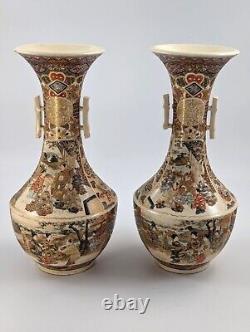
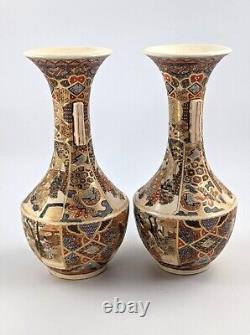
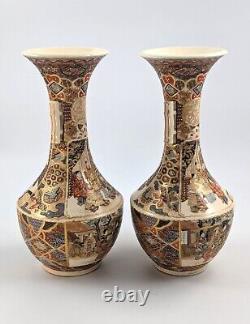
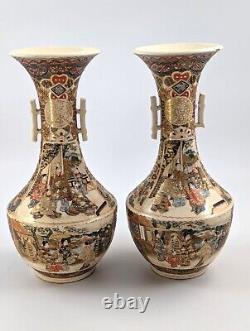
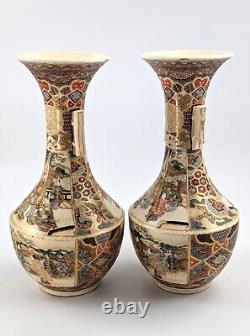
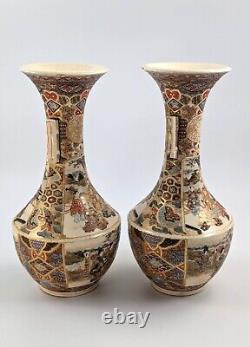
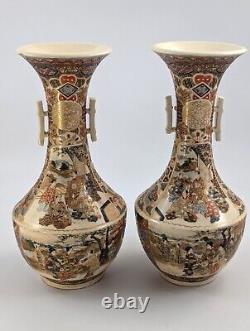


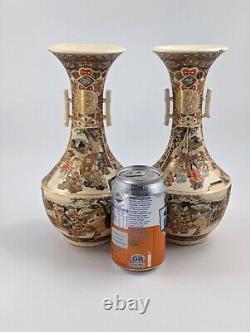

This pair of antique hand-painted earthenware vases was created by Takichi Hotoda in the late 19th century. Hotoda is considered one of the last great masters of Satsuma pottery during the Meiji period.
Renowned for his skill in depicting religious figures, he also played a role in marketing his own creations. These bottle-shaped vases feature double staple handles and flared rims, and are decorated with scenes of figures gathered by a river.The necks are adorned with elaborate paneled borders, alternating figural patterns with multicolored ornaments. Elements of the clothing and floral motifs are enhanced with gilded enamel in a technique known as relief decoration, where raised enamel dots create a three-dimensional effect-characteristic of high-quality Satsuma ware. The meticulous attention to detail in the figures' poses and facial expressions showcases the artist's exceptional skill. The vases are signed on the bottom with the mark of Hotoda, further enhancing their collectible value.
The Hotoda mark is typically associated with some of the finest Satsuma wares from the Meiji period. Satsuma ware dates back to the late 16th century, when the first kilns were established in the region.Initially, these ceramics were simple and utilitarian, but under the patronage of the Shimazu family in the late 17th century, Satsuma ceramics evolved into a refined art form. The Shimazu family promoted the production of high-quality ceramics to support the local economy, and Satsuma potters began experimenting with new designs and techniques, producing a wide range of ceramics, from teacups and sake bowls to more elaborate vases and statuettes. Pieces exported during this time were often lavishly decorated with gold and silver, featuring traditional motifs such as sakura blossoms and chrysanthemums.
Today, Satsuma ware continues to be produced in Kagoshima Prefecture and other parts of Japan, and it remains highly regarded for its intricate designs and rich history. Modern interpretations often blend traditional and contemporary themes.
Diameter at the widest part: 12 cm. Combined weight of both vases: 1,644 grams. First Vase: One handle is damaged and has been glued (see photos).
There are a few chips on the upper rim. Otherwise, it is in excellent antique condition.
Second Vase: A small firing crack is present on the bottom, but the vase is otherwise in excellent antique condition. Please review the attached photos carefully, as they form an integral part of this description.

